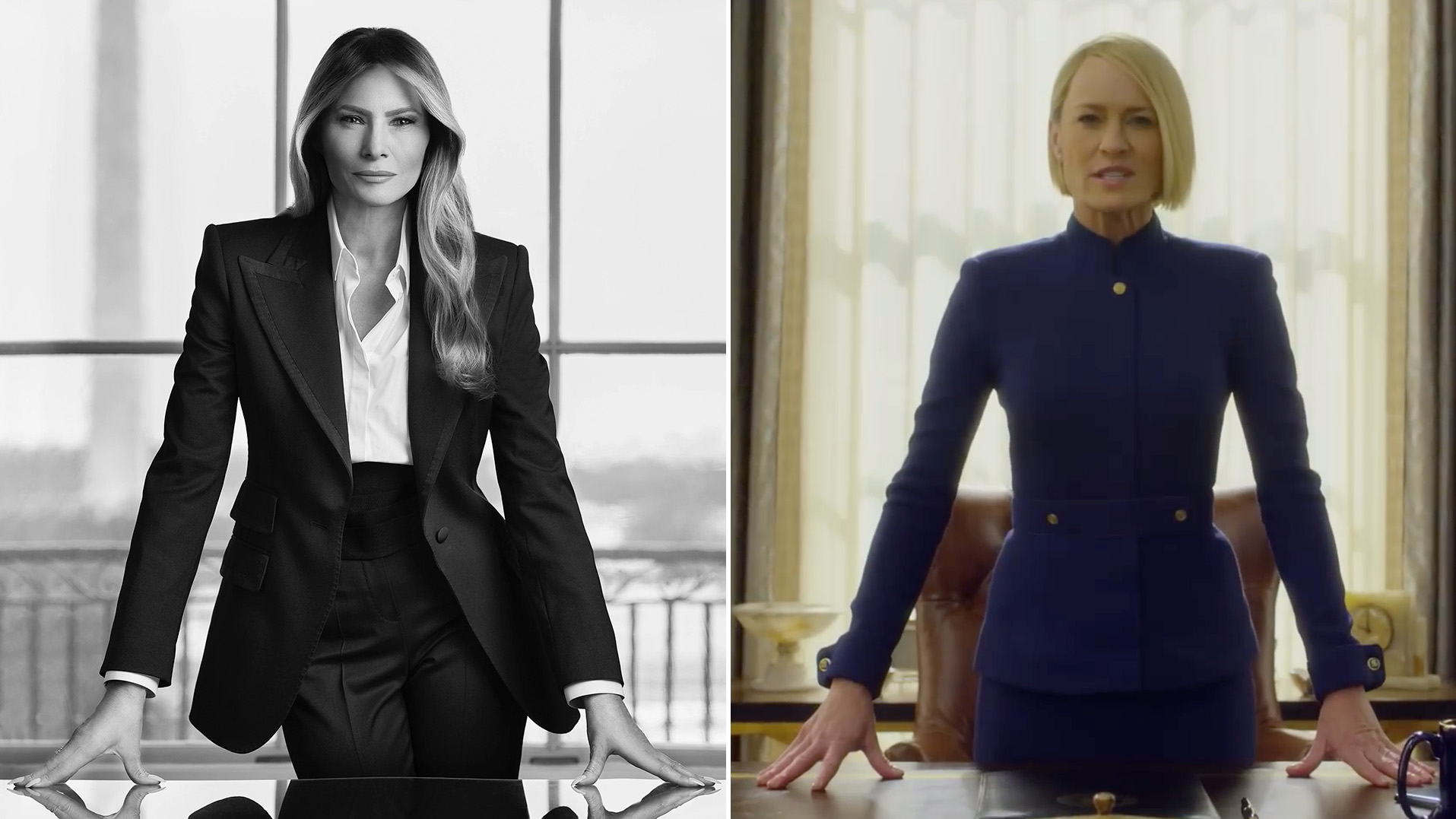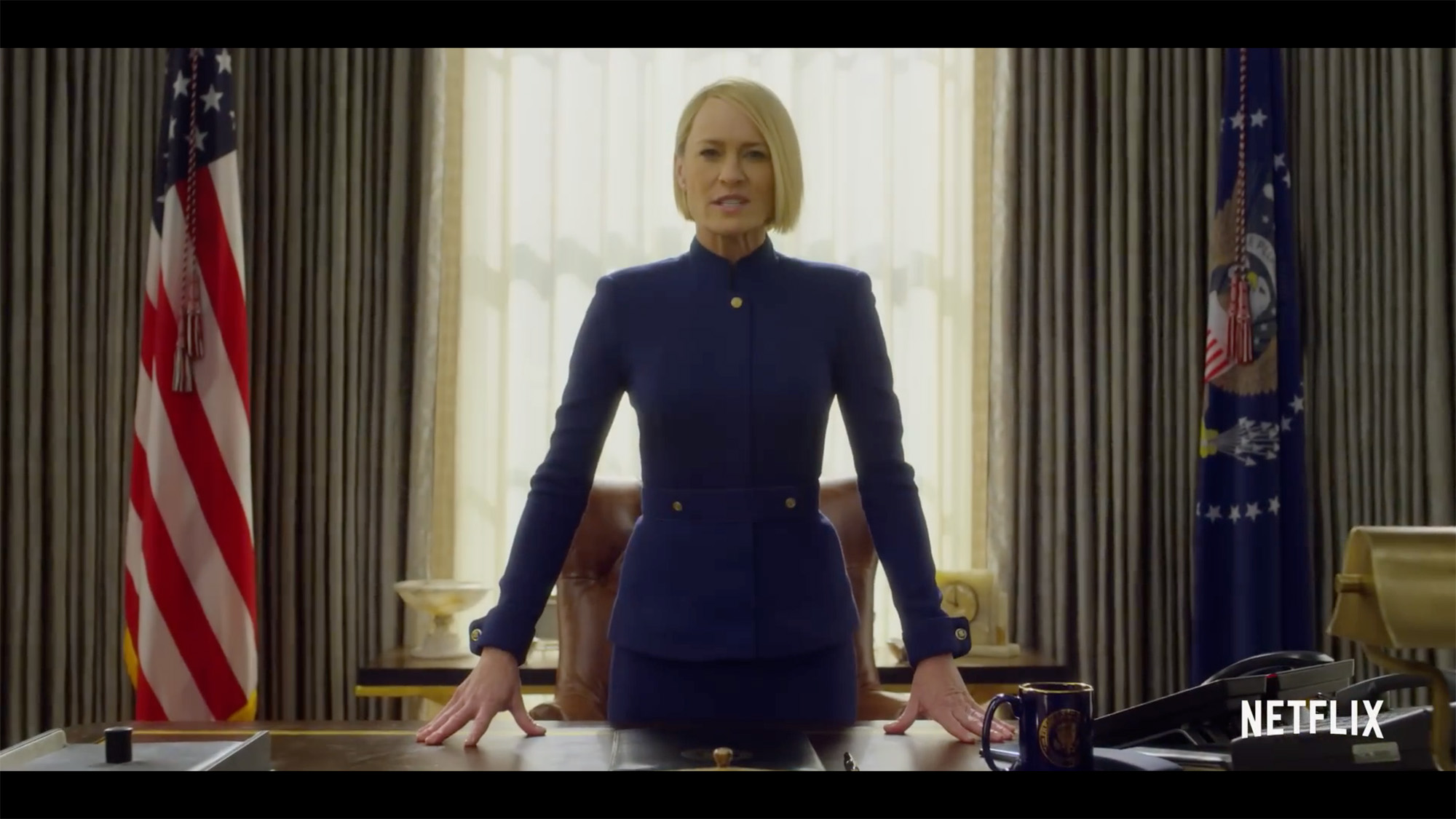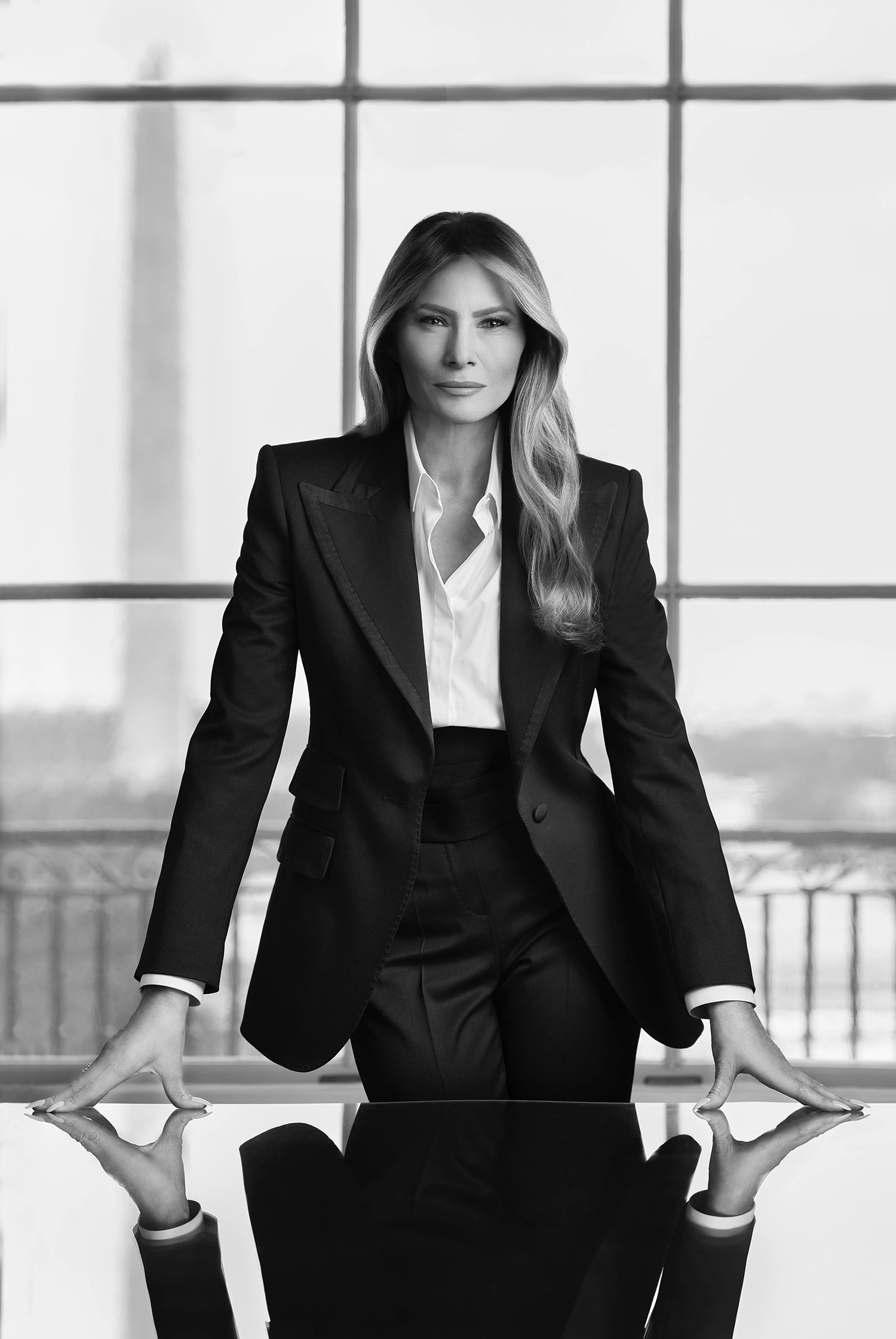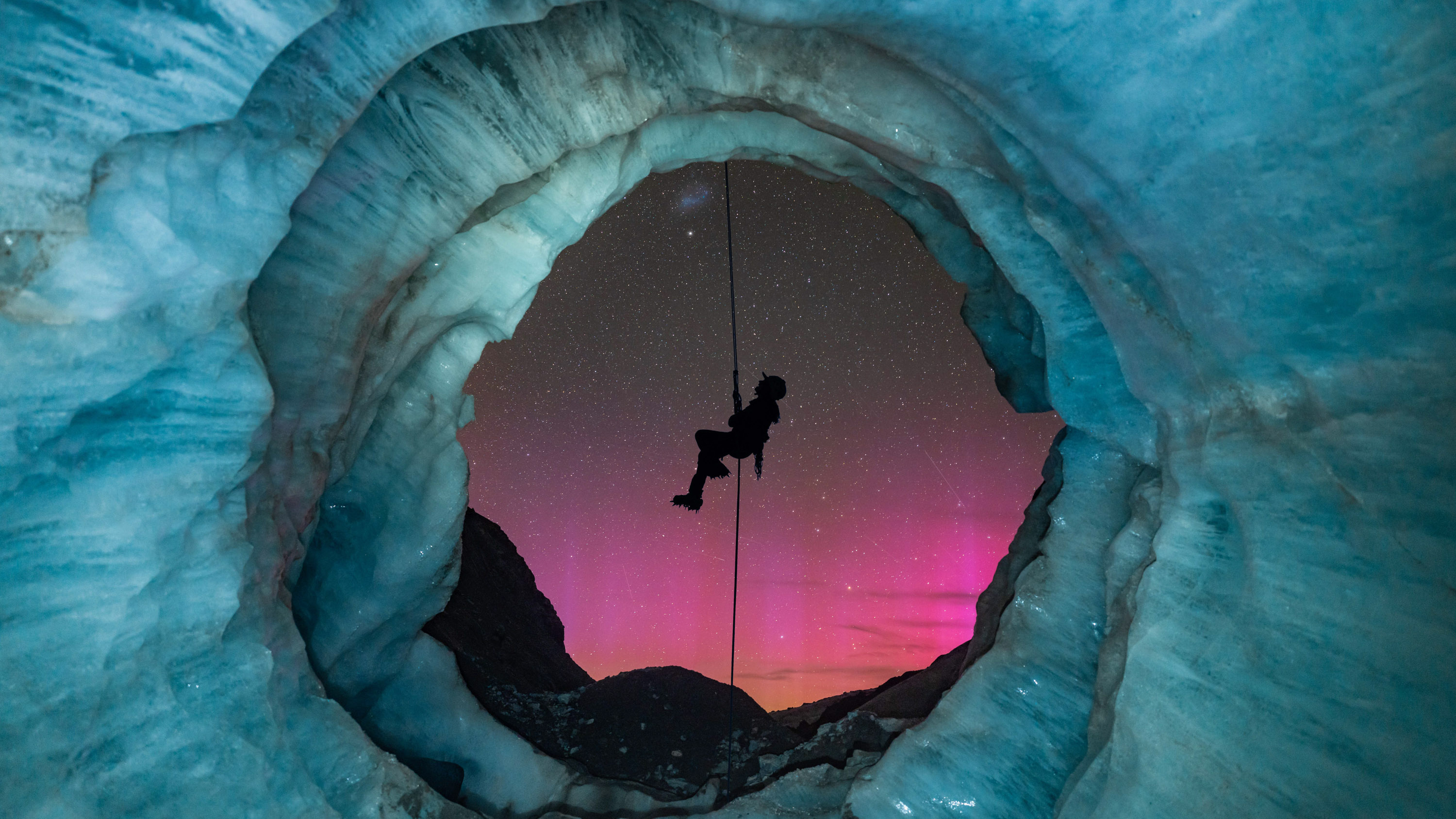Maybe it’s just me, but Melania Trump’s official White House photo is giving me serious 'House of Cards' vibes. Here’s my photography expert’s critique
Melania Trump’s official White House portrait will be one of the most viewed photographs in the world – and everyone’s a critic. But it’s not an easy gig for the photographer

The White House has unveiled the First Lady of the United States, Melania Trump’s, official portrait – and as Digital Camera World’s How To Editor, I thought I’d offer up my two cents on Régine Mahaux’s photograph. My intention here isn’t to be political but to provide some good old-fashioned photography analysis.
Before I get to work, I think it’s important to point out that capturing an official portrait isn’t an easy gig. The official portraits of the POTUS and FLOTUS are two of the most scrutinized photographs in the world. And when such portraits are revealed, it tends to be open season as far as commentary’s concerned. Suddenly, everyone’s a photography expert.
Some of the world’s most famous photographers have had the honor of capturing these hugely historic photographs – the legendary Annie Leibovitz and Pete Souza come to mind. And although outcomes might not always be to everyone’s taste, I think it’s important to note that these photographers know what they’re doing. I don’t know the specific conditions Régine had to work under, but portraits of officials and celebrities are often taken quickly.
Photography YouTuber, Jared Polin, recently critiqued President Trump’s official White House portrait captured by Chief White House Photographer Daniel Torok. Having spoken to Daniel, Jared said that the photographer had “roughly 20 minutes to take the photos and then from there they selected the ones they wanted, he made some prints and then hand-delivered them to Donald Trump to decide on which ones he liked the most.”
With that in mind, it’s worth remembering that photographers in these situations often have to work quickly and rarely have full creative control over the final image.
The portrait of Melania was captured on January 21 2025 in the Yellow Oval Room by award-winning Belgian portrait photographer, Régine Mahaux (@reginemahaux), whose work is displayed in various national galleries and museums, been featured in various publications including Vanity Fair and Time, and commissioned by global brands such as Mercedes and Nike.
Let’s take a closer look…
The best camera deals, reviews, product advice, and unmissable photography news, direct to your inbox!
A photography expert's take on Melania Trump’s official White House portrait
My first impression is that the portrait is rather striking. It’s certainly not what I’d expect from an official White House portrait. If the intention was for it to stand out – and I can only assume it was – it certainly succeeds. Creatively, I think it stands out more than President Donald Trump’s official White House portrait.
Much has been said about that portrait, but most commentary concerns the President’s facial expression and its likeness to his ‘mug shot’ as opposed to the creative choices made by the photographer. In contrast, the First Lady’s photo is a creative departure from the norm.
The key to a good black-and-white conversion is contrast. I’m happy to see that the black tones in the suit are dark and rich, while the highlights on her shirt are a crisp white. The deep shadows, dark clothing, and shallow depth of field combine to create a defined silhouette, which makes the subject stand out from the bright background. Add to that the powerful pose and expression, and I think this portrait is intended to convey strength.
The First Lady’s expression reinforces this. She’s not quite smiling, but she’s certainly not scowling. She’s also looking directly toward the lens; her eyes follow the viewer from whatever angle the photograph is viewed (the Mona Lisa effect).

The pose and expression remind me a lot of a clip from the House of Cards season six trailer, where Robin Wright's Claire Underwood is standing at the Resolute desk, with her arms in a very similar position. The choice of clothing, location, and indeed pose means this portrait has a distinctive business-like quality to it. And since both of Donald Trump’s campaigns have focused on his background as a businessman, I can’t imagine this was anything other than intentional.
What I have noticed is that this image is incredibly similar to another of Régine Mahaux’s photographs of Melania, where she appears to be signing her book, Melania. She is sitting at a reflective desk surface, in front of a large window, with a very similar hairstyle and suit. However, this photograph was posted on Régine’s Instagram 12 weeks ago. The photographer also credits the same hair stylist, makeup artist, and stylist, so it's possible this setup was the inspiration for the photoshoot in the Yellow Oval Room.
Clearly, studio lighting has been used to illuminate the First Lady and I think it works well. Returning to President Trump’s official portrait, the clamshell lighting is slightly too intense for my taste, while the highlights on Melania are more subtle. There’s a hint of Rembrandt lighting here, too, with the left side of the First Lady’s face cast in shadow and a triangle or ‘Rembrandt patch’ on the left cheek. Catchlights have also been used to draw the viewer straight to the subject’s eyes.
A post shared by Daniel Torok (@dto.rok)
A photo posted by on
The creative departure might not be to everyone’s taste but, from a technical photography perspective, I like the pose, I like the lighting, and I like the black-and-white conversion. When it comes to the composition, I think having the Washington Monument in the background is vital for posterity because there’s nothing else within the frame to suggest that this image was captured in the White House.
However, I would have perhaps preferred more separation between Melania’s hair and the window frame to her right, but for the photographer to retain the same central, square-on composition and distance from the subject, this may have pushed the monument too close to the left-hand side of the frame. What I’m not so keen on is the reflection in the foreground.
The reflection is so perfectly mirrored, that I think it pulls the viewer’s eye away from the main subject and there’s too much of it for my taste – I think it unbalances the composition. I think a 4:5 crop with less reflection would look better. But it’s worth remembering that this is a portrait that’s circulated all over the world and published in a variety of different formats, so it's very possible room was intentionally left within the composition for cropping, while also enabling print publications to print the image on a full page.
Some news outlets and commentators have questioned how much the image was ‘Photoshopped’, but Régine told Vanity Fair: “The picture didn't need to be retouched because we wanted to keep the authenticity.” I do think that in an age where fake news has become a bit of a buzzword and AI has increased skepticism over image authenticity, it’s very important for us all to be transparent about photo editing.
In my opinion, this image has been edited. But I will give the photographer the benefit of the doubt here and point out that 'retouching' is a subjective word – Régine could have been talking about skin retouching only and not additional edits – and the image could have been edited after delivery.
Zooming into the image, it looks to me like flyaway hairs have been removed and I can see several patches of inconsistent blur on the First Lady's face, which could be signs of retouching, but not something I'd expect to see on a professionally retouched image. There are also some anomalies around the reflection on the desk, but these could simply be reflective distortions or patches of unpolished desk. Again, these aren't what I'd expect from a professional retoucher.
Personally, I'm not against skin retouching. It's commonplace, today, even when using a camera phone. And if I were an official having a historical portrait taken, I'd certainly expect any non-permanent blemishes to be removed. But what I wouldn't want is excessive retouching. Comparing this portrait of the First Lady to her official White House portrait from 2017 – also captured by Régine Mahaux – the latest image has more texture in the skin, which I prefer, but the older image retains some flyaway hairs.
Overall, I would have framed less of the reflection and retained any flyaway hairs, but I think this is an interesting take on the typical official White House portrait. There’s no doubt in my mind that Régine Mahaux is an extremely talented photographer. And heck, it’s very easy to sit at my desk and pore over a single image that may well have been captured during a photo shoot that took less than 20 minutes.
Ultimately, a historic image doesn’t need to be technically perfect. It just needs to be distinctive and get people talking.
You may also like...
If you think the world looks better in mono then check out the best camera for black and white photography. Perhaps you'd like to know how to dodge and burn in Photoshop for brilliant black-and-white edits. And of course, don't forget to pair the best cameras for portraits with the best lenses for portraits.

Mike studied photography at college, honing his Adobe Photoshop skills and learning to work in the studio and darkroom. After a few years writing for various publications, he headed to the ‘Big Smoke’ to work on Wex Photo Video’s award-winning content team, before transitioning back to print as Technique Editor (later Deputy Editor) on N-Photo: The Nikon Magazine.
With bylines in Digital Camera, PhotoPlus: The Canon Magazine, Practical Photography, Digital Photographer, iMore, and TechRadar, he’s a fountain of photography and consumer tech knowledge, making him a top tutor for techniques on cameras, lenses, tripods, filters, and more. His expertise extends to everything from portraits and landscapes to abstracts and architecture to wildlife and, yes, fast things going around race tracks...
You must confirm your public display name before commenting
Please logout and then login again, you will then be prompted to enter your display name.

